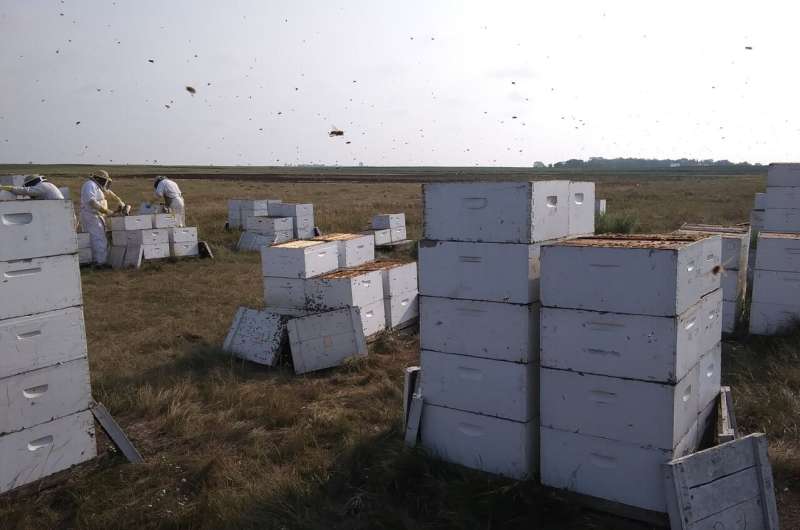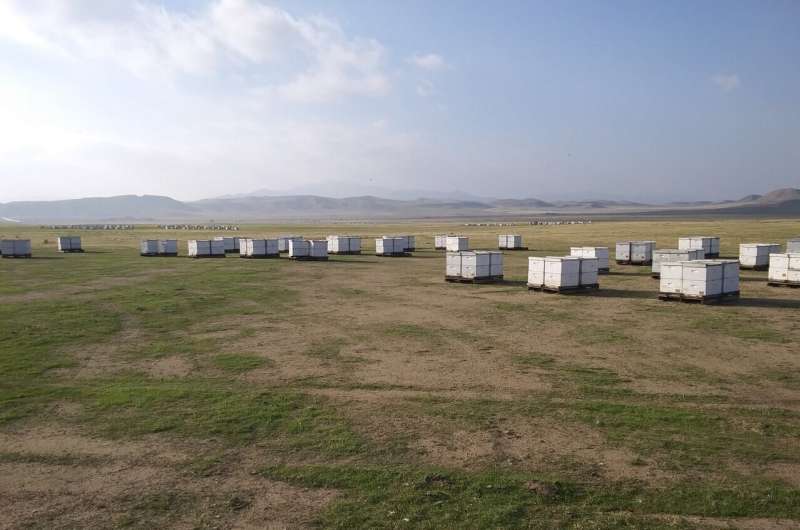
A new breed of honey bees provides a major advance in the fight against the Varroa mite.
The introduction of the mite 50 years ago has been the main threat to honey bees.
The bees were bred for resistance to the mite in a rigorous 20-year breeding program.
The bees that were resistant to the mite were more likely to survive the winter. The standard honey bees experienced high losses.
The Varroa mite is the greatest threat to managed honey bee colonies, according to Dr. Thomas O'Shea-Wheller.
New methods to control the mites and the diseases that they carry have had limited success, and the mites are becoming increasingly resistant to chemical treatments. It is a time-bomb.
By breeding bees that identify and remove mite from their colonies, our study found a significant reduction in mite numbers and a twofold increase in colony survival.
While this is the first large-scale trial, continued breeding and use of these bees has shown promising results.
This kind of resistance provides a natural and sustainable solution to the threat posed by Varroa mites and does not rely on chemicals or human intervention.
The study took place in three US states, where commercial beekeepers move tens of thousands of colonies annually to provide pollination for large-scale agriculture.
European honey bees lack effective resistance due to the fact that Varroa mites originated in Asia.

Like humans, managed bees are largely decoupled from natural selection.
Varroa -sensitive hygiene is when managed bees respond to mites by killing both the larvae and the mites.
colonies that are bred for this trait will be able to protect themselves from an attack while maintaining large colony sizes and ample honey production.
The great thing about this particular trait is that we have learned honey bees of all types express it at some level, so we know that with the right tools, it can be promoted and selected for in everyone's bees.
honey bees are in high demand in the early spring and this is a key time for pollination of high value crops such as almonds.
The study looked at Varroa mite levels in bee colonies.
The colonies that were bred for Varroa resistance had lower levels of three major viruses.
The viruses were not strong predictors of colony losses.
A lot of research is focused on the viruses, but not enough on the mites.
The viruses are important, but we need to take a step back and be rigorous in delivering the best practical outcomes because if you control the mites, you automatically control for the viruses that they transmit.
bee breeding and testing is expensive and takes time, but that breeding mite - resistant bees is cost-effective in the long term, and is likely to be the only sustainable solution to deal with the Varroa epidemic.
A derived honey bee stock confers resistance to Varroa destructor and associated viral transmission, according to a paper published in the journal Scientific Reports.
More information: A derived honey bee stock confers resistance to Varroa destructor and associated viral transmission.", Scientific Reports (2022). DOI: 10.1038/s41598-022-08643-w Journal information: Scientific Reports Citation: Selective breeding sustainably protects honey bees from Varroa mite (2022, April 7) retrieved 7 April 2022 from https://phys.org/news/2022-04-sustainably-honey-bees-varroa-mite.html This document is subject to copyright. Apart from any fair dealing for the purpose of private study or research, no part may be reproduced without the written permission. The content is provided for information purposes only.